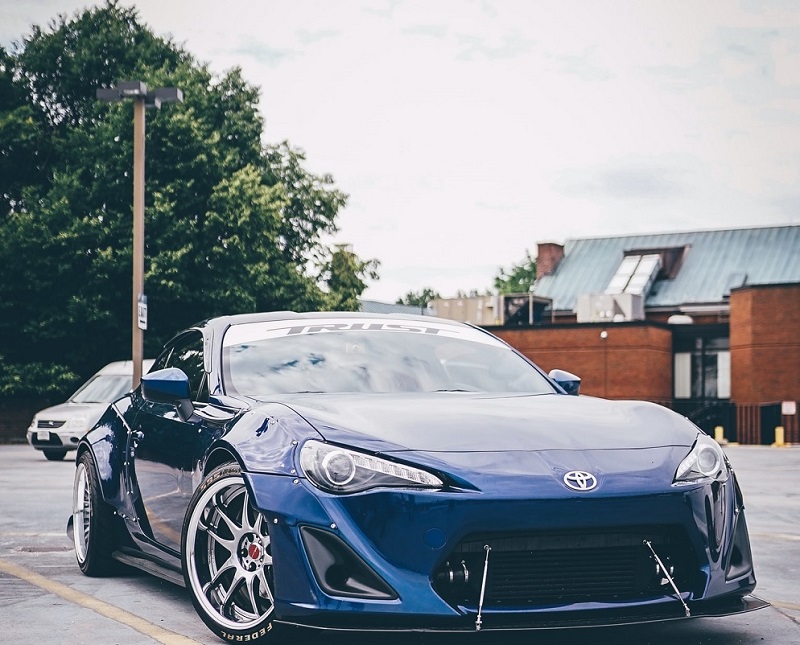
Honda Motor Company, Is a multinational corporation known for its reliability and high-quality production of automobiles, motorcycles and power equipments. Consumers perpetual favorites are included in its vehicle line up . Its vehicles have an average performance score and higher score in interior design in United States. They have performed well in crash tests as well. The 2018 Honda CR-V holds a top-rank among the compact Sport utility vehicles. Honda offers a balanced lineup which consists of vehicles doing great in all the key areas for a buyer.
Toyota Motor Corporation is another Japanese multinational manufacturer of automotives. In 2018, It was the sixth-largest company in the world. Toyata Supra, one among its many vehicles were a part of every car enthusiasts dream. Toyata Suzuki Multinational corporation with toyata as its parent is also involved in field of manufacturing automobiles, motorcycles, all-terrain vehicles , outboard marine engines, wheelchairs and other internal combustion engines. In 2016, Suzuki was the eleventh biggest automaker worldwide in terms of production .The SWOT and PESTLE gives a detailed analysis of the competition faced by the Japanese automakers like Honda, Toyota, Suzuki Motor from the Korean giants – Hyundai and Kia.
South Korea chose a government-led way of catching up with the global automotive industry at the early stage of development of the car industry. Since the “Automobile Industry Promotion Policy” in 1962, the automobile industry has been the major industry that sustained the Korean economy. The South Korean automobile industry has also put enormous effort into Research and Development since the industry undertook its first production in the 1970s. South Korea’s ambition is to commercialize self-driving cars.
Hyundai, is currently cooperating with American start-up Aurora Innovation, to develop self-driving vehicles that will operate without human input in almost all conditions. It aims to begin sales by 2021.The fastest-growing auto segment in South Korea is expected to be that of eco-friendly vehicles, including electric vehicles, hybrid electric vehicles, plug-in hybrid electric vehicles and fuel-cell electric vehicles.
A few years ago, Korean brands like Hyundai and Kia were thought to be no more than a compromise purchase for those who did not have the cash or credit to afford a car from Japan. However strategies that Hyundai and Kia had adopted ensured that they gave a tough competition to the Japanese brands like Toyota and German brands like Mercedes-Benz. Hyundai, a Korean automotive manufacturer is the third largest manufacturer of vehicles and was founded in 1967. It owns subsidiary, Kia Motors, and Genesis Motor, all of which together comprise the Hyundai Motor Group.
The ability of Hyundia and Kia to move past the Japanese auto industry, can be attributed to three factors. Chief among them was a commitment to quality. It recognized that the quality was poor and so, Hyundai put forward a dedicated corporate directive which would place quality before anything else. Chung Moong-koo became the chief executive of Hyundai. Chung’s orders and initiatives were carried out swiftly without question. Secondly, Hyundai was very much open to criticism and suggestion. Finally, what worked in their favour was the acceptance of the automakers that their cars lacked eye-catching design. In 2006 Hyundai appointed Peter Schreyer, an Audi designer and almost immediately, the reviews improved. The award-winning Kia Soul and others were created under his skilful guidance
Korean Giants are now focusing on niche markets too. Kia Motors,is developing a sub-4m compact SUV . Also, a luxury sedan is also been prepped for the Indian car market. Hyundia is also planning to launch a Rs 10 Lakh sedan which is expected to have class-leading features, something for which Kia Motors is well known world wide. Volkswagen’s emissions cheating scandal has also provided a boost for South Korean carmakers, while subjecting Japan to heavier testing. Auto-related names in Japan were hit by the intensified scrutiny on the industry’s environmental testing standards.
It seems that Japan is apparently slowly losing the crown that it has held for the past 25 years. In an unexpected turn, the South Korean Giants like Hyundia and Kia are rapidly moving on the path to take on the Asian industry crown from Japan. This success of the Korean Giants can be attributed to the rapid changes in the Korean car industry since the year 2008, when Kia and Hyundai started to change their design drastically and since then proved to be great threat for the Japanese automakers.

Mar 24, 2020

Sep 24, 2022